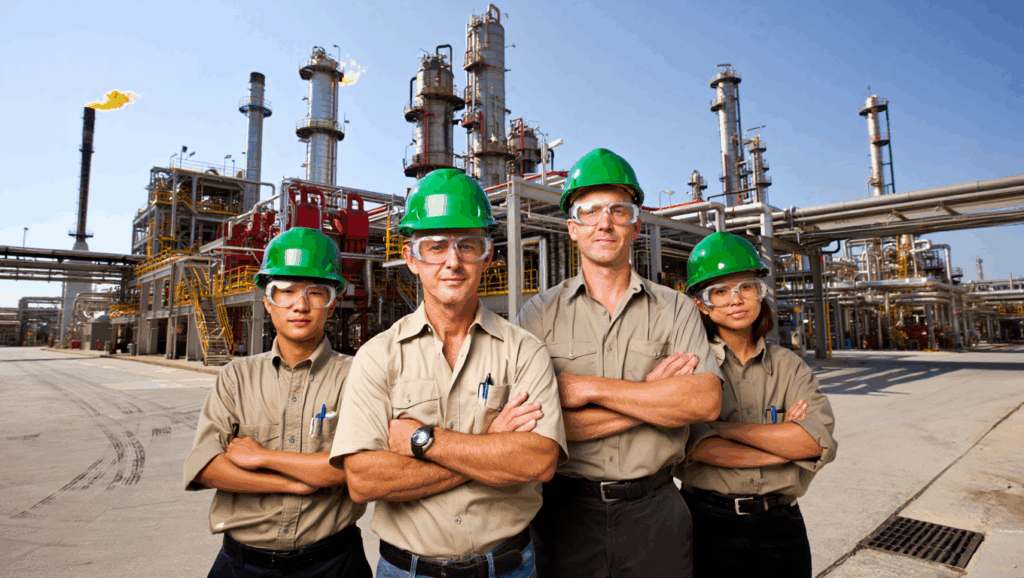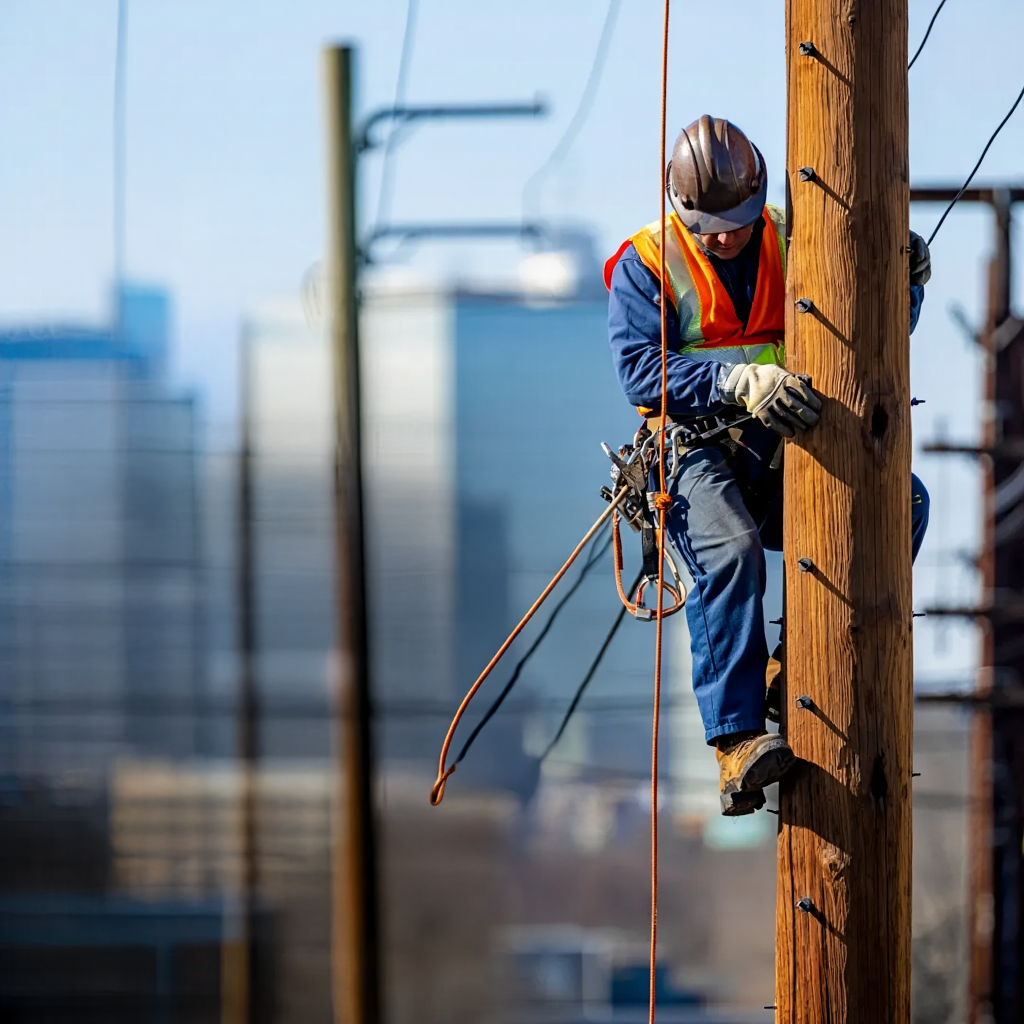Safety is a top priority in industries like oil and gas, electric utilities, and vegetation management. These sectors face various risks daily. Ensuring that workplace safety reporting is timely and accurate is more than important – it’s necessary. Proper safety reporting helps prevent accidents, protects workers, and maintains compliance with safety regulations.
Traditional safety reporting has its limitations, often leading to delays in communication, inaccuracies, and even missed opportunities for prevention. Enter AI-driven tools, transforming how safety reporting is managed. These tools provide real-time insights through instant data processing and smart analytics. Imagine being able to predict and prevent incidents before they happen, thanks to advanced technology’s ability to learn and adapt.
Delayed Incident Reporting
One common issue in high-risk workplaces is delayed incident reporting. When incidents aren’t reported swiftly, it can lead to a chain reaction of problems: unresolved safety hazards, unchecked equipment malfunctions, and more. Furthermore, the longer it takes to report an incident, the longer it takes to address the issue, putting workers at continuous risk.
AI-driven tools change the game by offering real-time data access. Here’s how they help tackle the problem:
– Instant Alerts: AI systems send instant notifications when an incident occurs, ensuring immediate awareness.
– Automated Reporting: With automatic data collection, the tools streamline reporting processes, allowing details to be logged in seconds.
– Accessible Data: AI tools often feature mobile accessibility, so workers can report incidents on-site using handheld devices.
Using AI, companies can foster a culture of immediate action, addressing risks quicker than ever. This is pivotal for high-risk industries where every second counts. With improved response times, employees and employers gain peace of mind knowing that their safety is a priority backed by advanced technology.
Inaccurate Data Collection
Inaccurate data can skew safety reports, leading to ineffective risk management and even regulatory compliance issues. Human errors, such as misreported figures or overlooked details, often occur during manual data collection. In industries like oil and gas, where precision is key, these errors can have significant consequences.
AI-driven tools step in to ensure data accuracy by automating the collection process. Here’s how AI improves the situation:
– Automated Data Entry: By reducing human involvement, AI minimizes errors in data entry, leading to more reliable reports.
– Consistency Across Platforms: AI tools maintain consistent data formats and metrics, which simplifies analysis and helps build a coherent safety strategy.
– Enhanced Data Verification: These systems often come with verification measures that cross-check figures to ensure everything aligns correctly.
With AI, data inaccuracies become a thing of the past, allowing teams to focus on effectively managing and reducing risks in complex work environments.
Lack Of Predictive Insights
Traditional safety tools often lack the foresight necessary to predict potential hazards, leaving industries like gas utilities unprepared for unexpected incidents. Predictive insights can serve as a crucial advantage, offering a glimpse into possible future risks and enabling proactive measures.
AI helps bridge this gap by learning from historical data to identify patterns that might go unnoticed by the human eye. Here’s what AI brings to the table:
– Pattern Recognition: AI evaluates past incidents to spot trends and anticipate future risks, reducing the chance of unexpected hazards.
– Proactive Safety Measures: With predictive alerts, teams can address potential risks before they materialize, enhancing overall safety.
– Long-Term Planning: AI insights assist in developing strong, forward-thinking safety strategies that consider potential future changes.
By using AI for predictive insights, companies can prevent incidents rather than merely react to them, setting a new standard for safety in high-risk fields.
Inconsistent Reporting Formats
In high-risk industries, consistent safety reporting is crucial. Variations in reporting formats across different teams or sites can lead to communication breakdowns and misunderstood data. This inconsistency hinders efforts to create a unified safety culture.
AI-driven solutions solve these issues by standardizing reporting processes. Here’s how they make a difference:
– Unified Format Adoption: AI tools standardize reporting templates across departments, ensuring everyone speaks the same safety language.
– Easy Integration: These tools can integrate with existing systems to provide consistency without requiring complete overhauls.
– Improved Communication: With uniform reporting, safety data becomes easier to share and understand among teams, supporting better decision-making.
AI ensures that reporting remains clear and coherent, facilitating more effective collaboration and understanding across organizations.
Inefficient Data Analysis
Analyzing safety data can often be slow and cumbersome, especially when done manually. This inefficiency leaves teams reacting to incidents rather than preventing them. Speedy data analysis, though challenging with traditional methods, helps in making informed decisions quickly.
AI offers a transformative approach to data analysis, simplifying processes and enhancing speed:
– Quick Data Processing: AI sifts through large volumes of data swiftly, providing actionable insights faster.
– Actionable Insights: These tools spotlight significant patterns and trends that might be missed, leading to more informed safety decisions.
– Continuous Learning: AI systems evolve with new data, consistently refining and improving safety analyses over time.
With AI-driven analysis, industries can move from a reactive stance to a proactive one, prioritizing prevention and streamlined responses.
Ensuring Safety In High-Risk Industries With AI
AI-driven tools address several longstanding safety reporting challenges. By enabling instant reporting, accurate data collection, predictive insights, and streamlined analysis, AI enhances operational safety standards across industries.
Embracing AI in safety management supports a culture of prevention and proactivity. This technological integration is not just about adapting to modern tools; it’s about setting a benchmark for safe, forward-thinking work environments. By leveraging AI’s capabilities, companies ensure that safety remains paramount, safeguarding both their workforce and operations.
Embracing AI-driven tools is a clear path to enhancing workplace safety across various industries. These technologies not only improve data accuracy and reporting consistency but also provide valuable predictive insights. To learn more about how an AI-driven safety reporting tool can support your operations, ensure compliance, and guard against unforeseen risks, Field1st offers practical solutions tailored to your needs.





